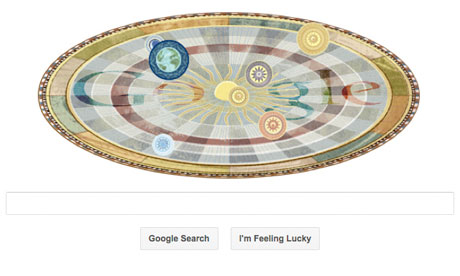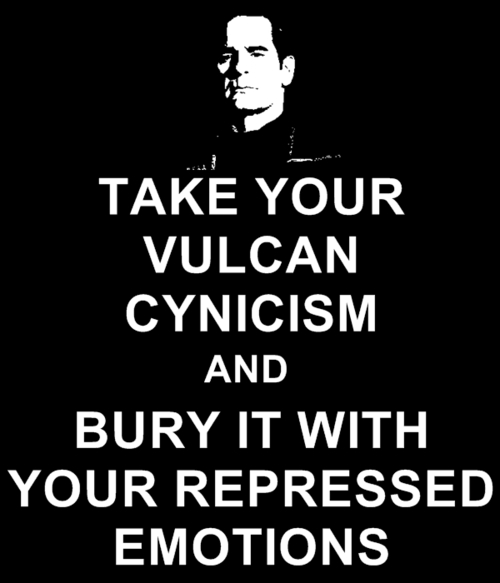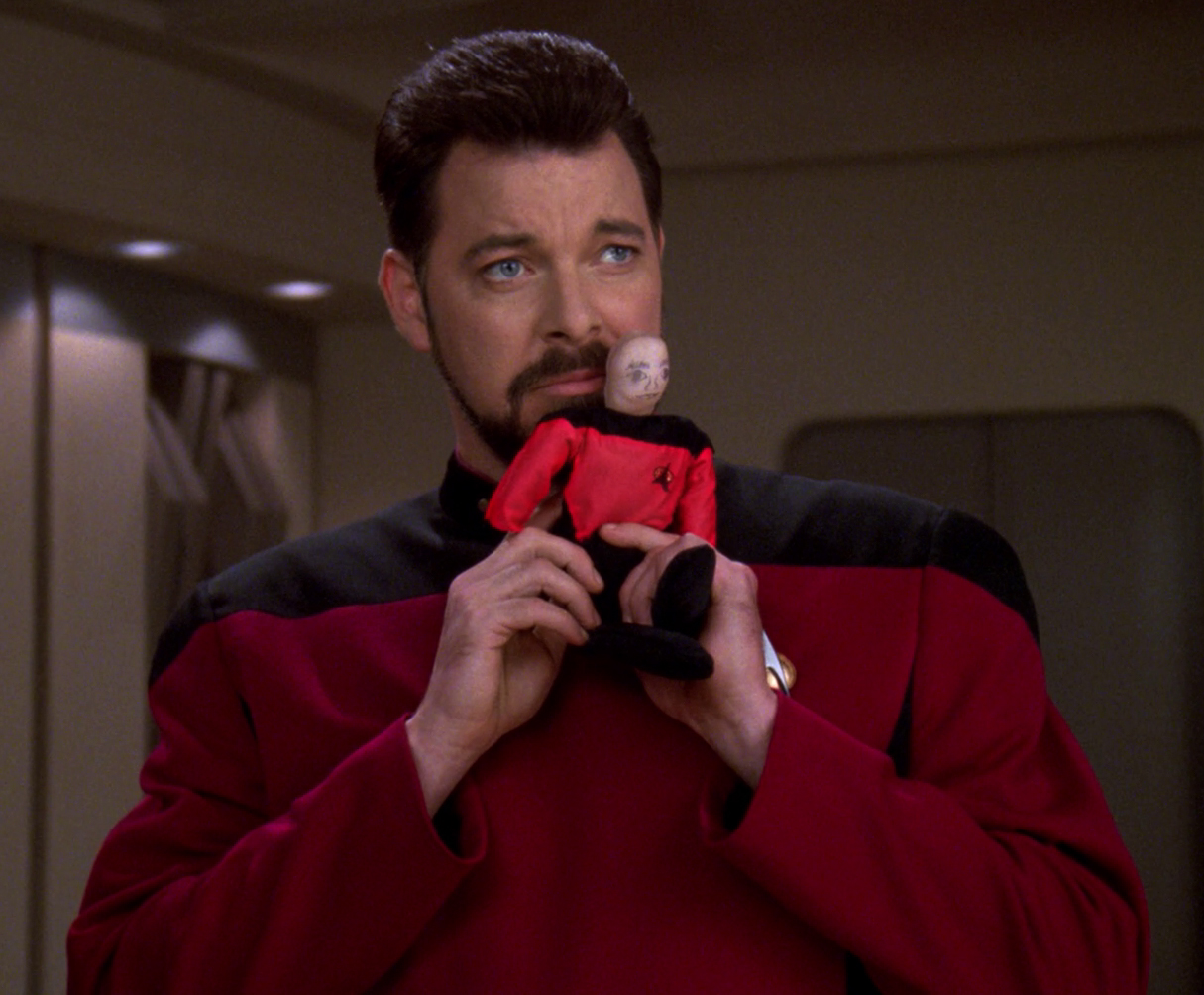Happy birthday day to you, Happy birthday to you, Happy birthday dear Nicolaus...............eh.......Copernicus.....Happy birthday to you, not looking a day past his 540 years..
I have to be honest. I didn't even know it was his birthday until Google made me aware of it first thing this morning. Google has a habit of doing that, you know what I mean? When it suddenly tells you about something of historical note or worth celebrating. Today was no different as it highlighted the birthday of Nicolaus Copernicus who is most famous for his piece of research Revolutionibus Orbium Coelestium........Revolutions of the Celestial Spheres. The heliocentric revolution put the Sun and not the Earth at the centre of the universe and brought condemnation from high above although rumour has it all was probably forgotton by him when he was handed the first printed copy of his theory on the day he died.
Coincidently I have been thinking a lot recently about personal learning plans and networks, which in turn sparked a little more for me today following Googles doodle. When Copernicus first started his work the common theory was that the universe revolved around the earth but his model put the power source at the centre and let the earth move around it. Now if we take that theory and look at any organisation or institution today The model shared in a lot of ways is still waiting for its own revolution, yes I agree that some are better at others at heading in the right direction but I recently read some reviews for a University's first attempt at MOOC and to say it was just doing it for the sake of....well doing it is an understatement. It was a poor attempt and still very much put the content at the centre rather than the learner.
The learner is your energy source and we should build everything around them and in turn let them build networks and share their knowledge. We still build and create stuff and the chalk and talkers still need to share but we don't push the content. Let them pull it towards themselves. Ownership is the only way our content will be embedded and work the most effectively. So what is it what does it give them?
An article by Dr Mark Wagner director of Google teacher academy shared some tips on personal learning networks and this guided my view.
Connection - with the learner is critical but that starts with them choosing how to connect and on what platform, our task is providing options. Contribution - i.e user driven and written content helps to support the network and lets collaboration, innovation and creativity flourish. Conversation -yes, real conversation, open discussions, forums, Google hangouts and anything else that sparks debate and opinion and support among learners. Support - Learning isn't fun when in isolation but with one trainer, coach or consultant there is never enough support to go round. Build a network, widen the support available. Socialable - That's right, my old made up word Socialable. Technology is in the hands of the learner 24/7 and access to the social is a constant in many peoples lives, use it. Blog, Tweet, Link, Flip, Hangout, Yamm or whatever you like but do it and let people connect.
If done right, personal learning networks, personal learning plans will thrive on a rich vein of content and help people to grow but a couple of things worth considering.
Be Patient, it's a cliche to say that Rome wasn't built in a day but neither will this. You have to start small and build confidence that it is the right thing to do. Information today is served up at the blink of an eye or swipe of a controversially patented finger but when it comes to learning and opportunity people still expect a lot to land on their plate so build your revolution with a long term culture change in mind. Authenticity is key too, don't make it out to be something it's not, don't promote it as a revolution straight off as it will be up to your learners to create that.
Now go build.
That Learning Dude @learningXDude
Tuesday 19 February 2013
Tuesday 12 February 2013
Starfleet's failed Learning and Development strategy
My intention was never to write about this, but Jambo Andy Kent mentioned the name Riker to me and it brought some issues I supress bubbling up from deep inside. So forgive me Gene but.......
Exhibit A (above) NCC-1701-D........well the saucer section at least entering the atmosphere of Veridian III and tearing towards a crash landing. In some people's eyes, what you are witnessing is the coming of age and mark of a true tactical genius, the great (probably self titled) Commander William Thomas Riker.
In my eyes, it has been always something of a shameful act, but I am not going to dwell too much on this for now, but I do want to look at some of the fundamental flaws in Starfleet's leadership & people policies.
Let's start with the obvious.
Recruitment. If your first posting on a federation ship is in a red shirt, let the family know you love them, chances are you won't see them again. Somewhere in the region of 73% (made up) of security personnel never made it home.
The upshot is that the recruitment policy of the federation was outrageous, a distinct lack of information had obviously been provided up front. Okay so I realise it would be difficult to do this without severely impacting on staffing levels but it is imperative that your recruitment policy is as honest as possible. State the colour of the uniform the
Captains Traits - Leadership Development. Okay so first thing you may notice is that the image shows five Star Trek captains. I have deliberately left Riker out the picture as despite being promoted to Captain in the field this was only a short time before he crashed the car Ferris Bueller style.....but I am still not going to talk about him just yet.
Those five legends had many a tale to tell but their characters did not always demonstrate the traits that make a great leader because at times the exterior image harboured a lack of personal skills which had been grossly ignored by the Starfleet Learning & Development team. The academy had failed on numerous occasions to gain Investor in People status and at the centre of this was a failure in the coaching and mentoring area. I met with someone from the academy once and they told me that Starfleet leadership workshops HAD to be delivered in a particular way and you could not break this code. The room had to be set up with chairs in the shape of the famous Starfleet Insignia (we traditionally call this horseshoe) and only approved external providers would be allowed anywhere near the Bridge. So what was it about them?
Lets start with Archer, he was a bit of a lads lad and as CV's go it was impeccable with him amassing an impressive 26 merit badges from the boy scouts of America not forgetting his Eagle Scout Award but for all the badges on his arm something was missing. Equality and Diversity was a bit lost on Archer and not really something a galaxy hopping Captain should be without, he had a real distrust of the Vulcan's, blaming them for the slow pace of human progression and restricting his fathers work, but he eventually managed to shake this attitude off although rumours remain as to whether this was through the implementation of the Academy's E&D programme or the infamous mind meld with T'Pol in 2154.
On to Kirk, a well known (if you are an anorak) quote of his was taken from appraisal notes for one of his direct reports where he said "genius doesn't work on an assembly line basis, you can't simply say today I'll be brilliant" oh gee thanks James T......a really motivational quip. It was his responsibility to lead the entire crew to success and be better than they can be but although his persona demonstrated a charismatic and commanding presence he was incredibly disconnected from his crew, choosing to a first officer who didn't have the emotional capacity to get cheesed off at his egotistical antics.
What about Picard? More akin to sailing the seven seas and singing Gilbert and Sullivan than journeying where no......one had gone before........or technically has yet to go at this point in time. His arrogance often led him to become isolated from others and succession/talent planning was always out on the back burner. If he had formerly laid down plans to get Riker off the Bridge and on to his own command then Enterprise D would probably only have required no more than a paint job, but he didn't. Picard didn't help by making statements such as "Things are only impossible until they're not" Flippant remarks like that allowed Riker to believe he had a chance of stepping up into the captains chair and for 15 years he waited and waited turning down every command that came his way of course we know what happened when he did get the chance !! Glad I don't pay the insurance.
As a leader you have to demonstrate to your team that you can rise above petty differences and work together. Sisko didn't always buy into this, especially when it involved a spot of Teamwork used in the same breath as the name Picard. At the battle of Wolf 359 in an attack on the federation led by Locutus of Borg (aka Picard) Sisko's wife was killed and he harboured a deep hatred of his fellow captain. Understandable in some respects but what did Starfleet's occupational health and senior leadership team ever do for Sisko to support him and his young son through their grief? Oh yes, that's right. They transferred the poor sod to a station next to a worm hole ripe for Dominion invasion......very good.
Janeway bucked the trend of follically challenged Starfleet captains but aside from this it was a distinct lack of a distance learning programme that caused most of her problems. In at times a stereotypical role she could be seen as a bit mumsy and often took on the problems and pressures befalling her crew. This led her to come across as a bit of a martyr and with no suitable search function on Voyager's learning management system providing access to Stress in the Workplace or Handling Difficult conversations eLearning modules she fought a constant battle of like it or lump it a mere 70,000 light years from home.
So there you have it, an alternative look at Starfleet's poor Learning and Development strategy and all stemming from concerns I have always had about Will Rikers credibility as a Starfleet commander.......even with a poor L&D strategy.
That Learning Dude @LearningXDude
Thursday 7 February 2013
Raiders of the Lost Spark
I got to thinking last week after listening to Owen Ferguson (Product Development Director at GoodPractice) as he spoke about how you can measure the level of engagement with an online initiative. It was a great starting point as in the day job I am working with others to migrate from one LMS to another and part of this is focussed on how to promote the new product and drive traffic towards it, but I started to go deeper. What if it isn't just the tool, or the product you place upon it, what if it's everything and worse than that, what do you do if the learner has lost interest in learning all together. What can you do when they have lost that spark and most of all who stole it?
So where was I? Ah yes, Indiana Jones. There he is, in some ancient temple in Peru fighting his way through perilous challenges before finally getting his hands on a golden idol..........well briefly, before his rival Rene Belloq snatches it away. That can be the learning journey sometimes, you work towards something but you never quite get what you were promised.
Everything you have ever learned has been stored away in your very own Ark of the Covenant data warehouse. You can recall a fraction of it from time to time but when you lose the spark you have no interest in anything new, you become a slave to what you are told rather than what you want. Our lives can be filled with so much "stuff" (Trademark Brian Costello) that we find ways not to learn. I see this on a daily basis as people are served up what we think they need rather than what will bring them to life.
So let's go back to Indy. Now perhaps the quest we first met him on didn't turn out so well but what follows is history, Indy gets to thinking? and the interest he has in everything he does drives him to learn more and more. He has goals and works towards them. That's the starting point when a learner loses that spark. What is their need, the real need, the one that creates interest. A training needs analysis for me never quite goes deep enough. Most TNA's are built around a skills gap to perform a job or role better. That is fine but they tend to come up with a series of initiatives that are one dimensional and do not fulfil the basic needs of the learner as an individual. If that is not met then you will fail at the first hurdle of engagement. Consider adding a new step, one that starts with the individual and find out their personal learning needs. Are they in the right role, are they challenged by it or have you asked them what is missing. Without these questions no amount of lovely shiny toys and tools will help. Once you have them then you can blend the personal and business need together.
You also have to make sure everything stays on track. If you build learning paths or journeys etc for a learning it is essential you build some checkpoints into the programme. I've been there, I have been on flashy talent and development programmes which promise the earth and begin with a bang but suffer from drop out rates, missed events and poor return on investment. A lot of the time the business gets the blame...."I have been asked to attend a really important meeting and have to cancel"....."Can I leave half way through the day to take a really important call" but the failure is the inability of the programme to explain the benefit of the learning, what it will bring to them and more importantly that it is about them and not the business. Set milestones, make the learning shorter, find out what time they can give and how they would like to learn and build your programme around that information. Strip the knowledge from the practical and roll them out in innovative and creative ways taking advantage of social and online avenues they would not expect from the traditional blurb.
Learning logs are a great way of engaging too, encourage people to keep track of all their learning but not just in a CPD style more like a diary. Getting them to really think about what they are doing. How can they connect this to who they are, what type of leader/person they want to be. How it links with what they do, the job, the people etc. Get them to chronicle where they want to go. This is a career map and one you can support. Especially as you have now worked out what they need.
"I knew you'd come"
Now it isn't a quick win, and you have to work at it, but work at it together and they will return to the learning fold. Don't make it flashy if it doesn't need to be. It should be simple and fit for purpose. Built by a carpenter for a carpenter if you wish. That's personal and that's return of the lost spark.
Da da da daaaaa da da daaaaa, da da da daaaaa da da da da da !!
That Learning Dude @learningXDude
Sunday 3 February 2013
Show and Tell at Learning Tech 2013
As one of the many who descended on the Olympia this week I am also one of the many who took notes, snapped pictures and made various other observations along the way. It is funny to see the change at these events over the years when you get strange looks for pulling out a note book and pen as those around you zoom, swoosh and click on various tablets and smart phones.........okay I confess I used both........call it blended event attendance. Anyhoo........this week I want to look at some of the takeaway moments that stuck with me and what got me thinking for the year ahead
Now let's get the scariest question out the way first, and before you pounce, hear me out. During one of the bite size seminars I heard a question asked that left me rocking a little "what is 70-20-10" Now perhaps it is naive of me to think out of the thousands that attended that this is a question that shouldn't be asked but in a learning world that is still trying (in some quarters) to come to terms with a pace of change like it has never experienced before why not ask it? Granted I did chuckle when the person asked the question wasn't so convincing in the response they gave but lets not dwell on it.
Now the learning world is a place where operating space is at a premium. Everyone has something to pitch and an insight to share and although given some guidance to plan your visit I opted to freelance as such on day one and drop by as many stands and seminars as I could to pick up snippets for a general theme of what 2013 holds. In a snapshot, social, video, short, animate, captivate, articulate, communicate and look at me, but with each of those I took something away.
Communication - We still don't have an idea on how to communicate in the space, there were two instances where one view said, instant is dead, email is the best way to get the message across to staff while nearby the commentary was that email is ineffective and we should instant and social every message. If we have people still grasping at informal, versus formal versus on the job how can we expect them to single out one form of communication versus the other. Time and a place for each still exists.
Buy in - There are those who get it and want it and those who want it and don't get it and there are those among you who are going down the wrong thought process with this but anyway I shall continue above the gutter. You see, I get it..... the way learning is going that is. I embrace it, I ain't Gen Y and I ain't Gen Z and if anyone says I am old I prefer to think of it as retro. Learning is on a natural progression and developing alongside the technology evolution at a frantic pace. A story was being told by Gavin Oattes, MD at Tree of Knowledge on mindset and he perfectly summed things up when relaying a conversation with a kid who said he wouldn't understand because he was a grown up......in fact we shouldn't be called grown up's but given up's !!! Brilliant, just brilliant and it so captures why I feel some people don't want to buy in to the fact that learning is changing it's because they fear it's changing and that fear is that they may have to.
Video and animate - Video killed the radio star in 1979 and has been running free ever since. It had an internal battle with Betamax versus VHS, watched laser discs come and go, invited DVD to rule the world and now Blu Ray and Blu Ray 3D run the show as video continues to both entertain and educate. How integral it is to learning evolution was demonstrated the other day. A colleague created a little video for work using VideoScribe which is a superb and cost effective tool that allows you to build some pretty neat and fast paced infommercial's. Such was the power of this (awesome) animation is that it progressed up the food chain in a matter of hours and created a social buzz across the company. The pace of this matched what was being talked about at LT13. Lot's of companies are providing rapid video/animation tools (just like Video Scribe) and in some respects you wonder how many animated scribble you can take but used correctly you have the ability to add a different dimension to courseware, workshops and programmes. You Tube etc are common place in the day to day world and using it as a way of bridging the gap between formal and informal is an all round better way to engage learners by giving them a medium which they already use.
Making it real time, makes them learn without thinking they are learning. Of course it wouldn't be a conversation about learning video without a thought for the kings of learning video. My Video Arts experience goes back some 10 years when getting the keys to a dusty learning kit cupboard and finding meetings bloody meetings, I watched it, liked it and loathed it in equal measure, loved because it was engaging and entertaining, loathed it because it worried me what shelf life it would have without reinvention but I have a lot of time for Video Arts. For forty years they have stuck fairly well to their task and reinvented without really changing their strategy. I have to admire them for that as it shows that the more we change the more we can stay the same.
Articulate - What's the Story(line) - Tom Kuhlmann pulled the crowd in on day 2 and I made a point of getting along early to get a seat as despite playing poker when walking by the Articulate stand (no sales jive allowed) I was keen to see what all the fuss is about with Storyline, I have been interested in it for a while but never really found time to do anything about it. I am big on rapid content build and interested in finding the bit of software that is simple enough for the old skool chalk and talk squad to drop the fear and build the support content that brings their work alive for today and I think Storyline is it. Tom Kuhlmann demonstrated three simple core elements for good quality interactions and I was pleasantly surprised at how good this was compared to other tools I have been using in recent years. If I add this session to the one viewed on day 1 with Helen Tyson from Omniplex on Software simulation using Storyline then I think I may have found a new toy.
There is a lot to take in at these events and I think I will still be working through my notes for a few weeks to come but for now I need to look for a better hotel for next year.
That Learning Dude @learningxdude
Subscribe to:
Posts (Atom)
















